Physical Address
304 North Cardinal St.
Dorchester Center, MA 02124
As with reconstruction elsewhere on the body, surgeons must keep in mind the “reconstructive ladder” when repairing hand defects. Consider treatment options that range from “simple to complex” and from “local to distant.”
Local flaps are composed of skin and subcutaneous tissue that is adjacent to the recipient site and has an independent blood supply. These flaps are preferred ( Fig. 86.1 ) because the local tissue and recipient site are similar in color, texture, structure, sensation, and hairiness. When adequate tissue is available locally on the hand, a local flap can be used for coverage of exposed tendons, joints, and bones (see procedures in Table 86.1 ).
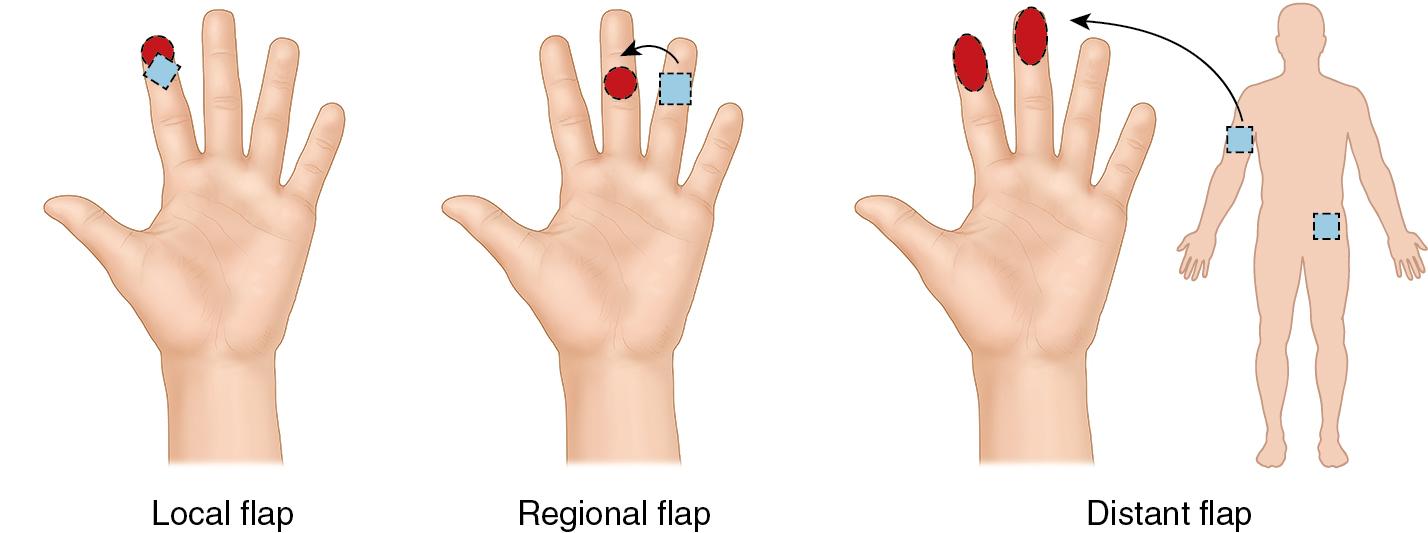
| Location | Local flap (harvested next to the injured zone) | Advancement flap | Rectangle flap |
| Triangle (V-Y) flap ( Chapter 87 I) | |||
| Bipedicled and keystone flap | |||
| Pivot flap | Rotation flap | ||
| Rhomboid flap | |||
| Bilobed flap | |||
| Transposition skin flap | Z-plasty | ||
| Multiple Z-plasties | |||
| 4-flap | |||
| 5-flap Z-plasty | |||
| W-plasty | |||
| Regional flap (harvested from adjacent zone) | Thenar flap | ( Chapter 87 III) | |
| Cross-finger flap | ( Chapter 87 II) | ||
| Homodigital island flap | ( Chapter 87 IV) | ||
| Dorsal metacarpal artery flap | ( Chapter 88 II) | ||
| Distal flap (harvested away from the injured hand) | Groin flap | ( Chapter 91 ) | |
| Lateral arm flap | ( Chapter 92 ) | ||
| Blood circulation | Random flap | Supplied by a random pattern of subdermal plexus | |
| Axial flap | Supplied by a known artery |
Local flaps are defined according to the relative position of the skin flap and the receiving site. They can be designed in a triangle, rectangle, trapezoid, or rhomboid shape to match the defect.
The blood supply for a local flap can be random or axial (see Table 86.1 ).
Random pattern flaps are supplied by a random pattern of subdermal plexus. The size is limited by the length-to-width ratio, which is usually 1:1.
Axial pattern flaps have a known artery that directly supplies a specific skin territory. The size of the axial flap is not limited by the ratio of length to width and depends on the perfusion area of the main donor vessel.
The size of the local flap depends on the mobility of the skin. Typically, larger flaps can be designed on the dorsal hand where the skin is more elastic. Meanwhile, the stiffness of palmar tissue limits the size of a local flap.
Various types of Z-plasties are described in this chapter for the treatment of scar contractures. These are random pattern flaps, with blood supply provided by the subdermal plexus.
Burn, scald, electric, and other thermal injuries often cause thick, hard scar bands or contractures. Contractures are often located on the volar side of the hand ( Fig. 86.2 ) or at the joints, where they limit finger movement. In addition to the skin, contractures can affect the subcutaneous soft tissue, fascia, muscles, and joint capsule.
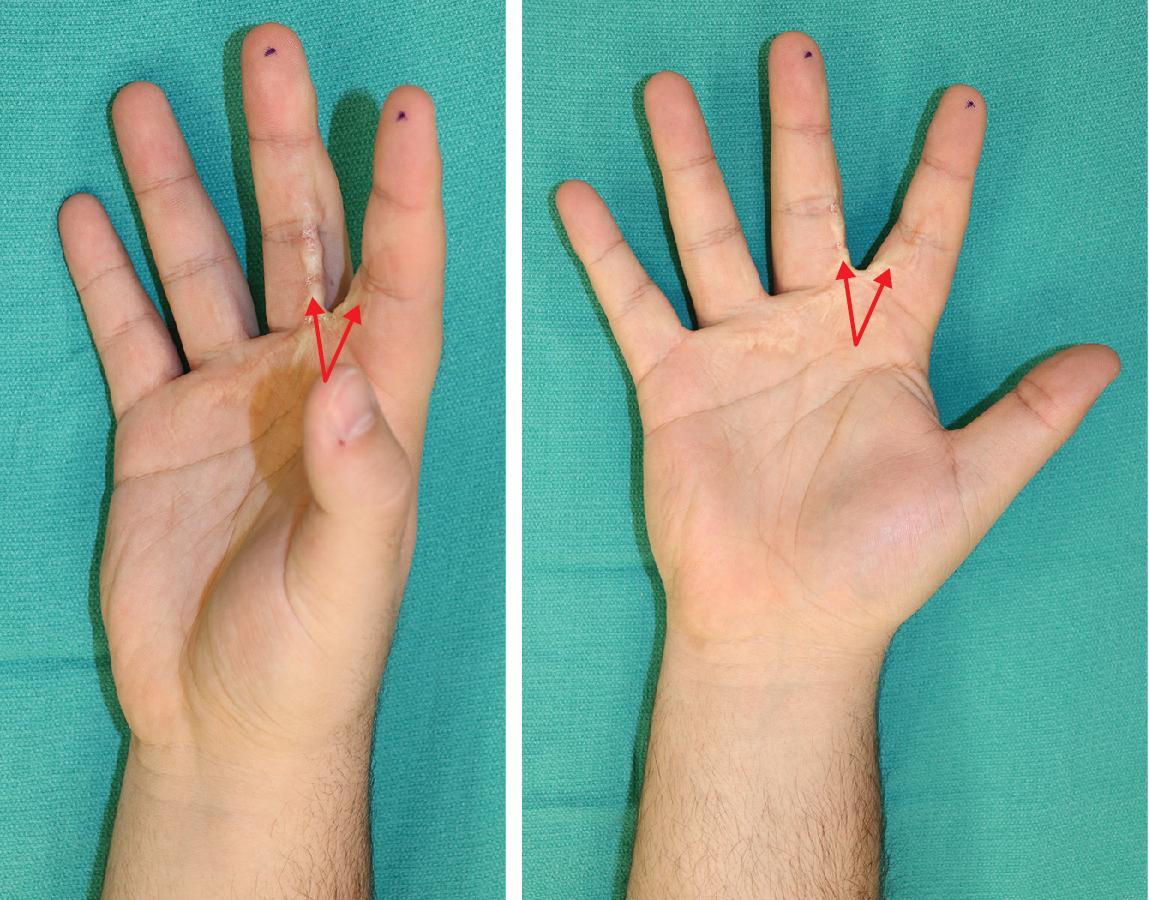
Because the resultant wound is typically larger after release of a contracture or scar band, local tissue rearrangement is usually necessary to facilitate primary closure.
Scar contracture may appear as a linear or webbed scar ( Fig. 86.3 ). The goal of treating a scar contracture is to interrupt the scar line, change the direction of the scar, and lengthen the long axis of the scar. This is often necessary to permit greater mobility of the hand and extension of the digits.
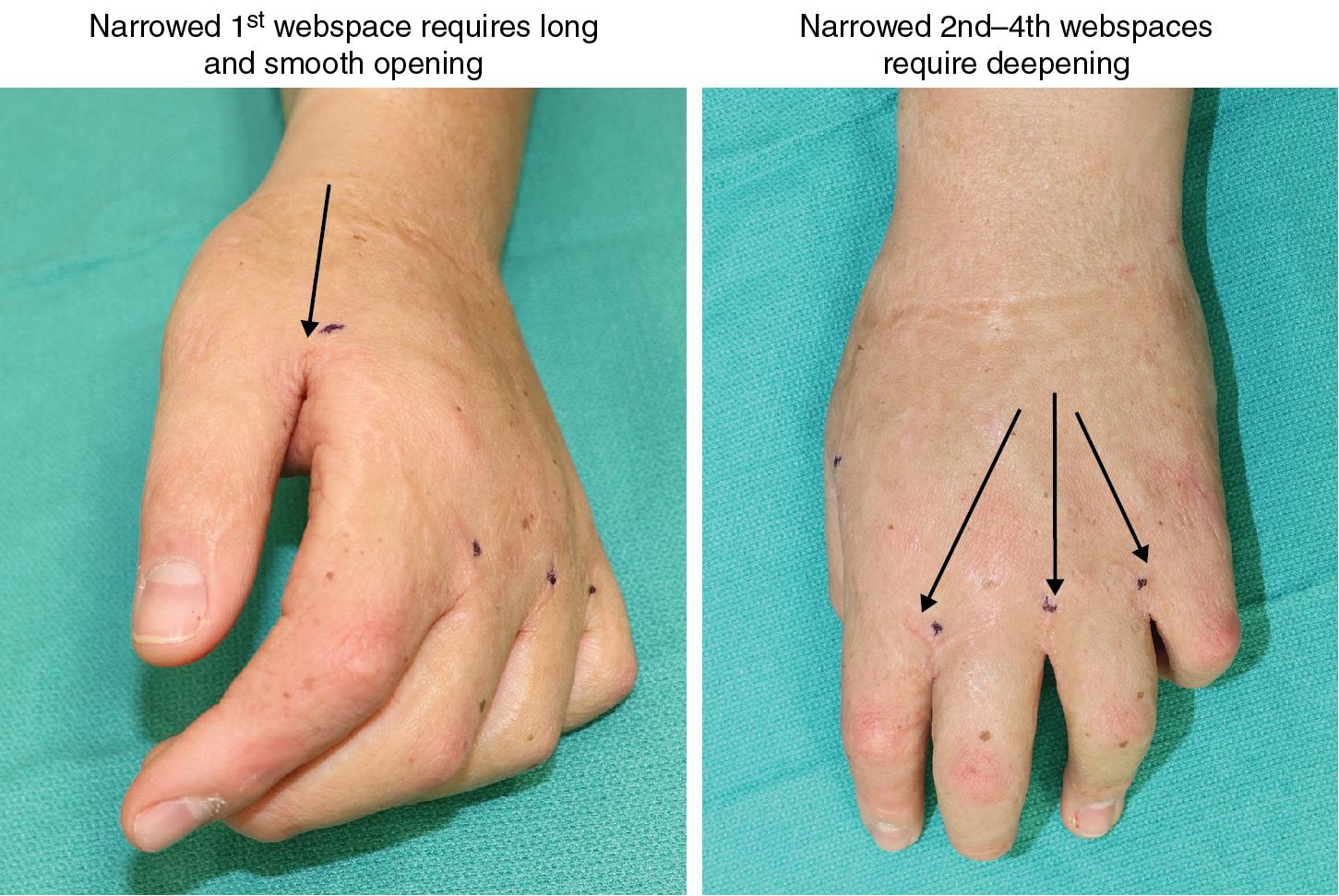
If the defect is too large or there is a paucity of local tissue, then more distant options are considered, such as tissue expansion or use of a free flap.
Z-plasties are only used to repair linear scars or webbed scars. Lamellar scars, sheets of scar, or skin defects may instead be repaired with advancement, pivot flaps, or regional flaps (see Chapters 87 and 88 ).
Avoid performing Z-plasty in keloids and hypertrophic scars that may recur along the lengthened scar.
Determine whether normal skin is available on either side of the contracture or scar and identify any previous scars.
If the skin is under high tension, pull and stretch the skin to evaluate its mobility.
Consider the length of the scar and whether a web contracture is present when selecting the appropriate type of Z-plasty.
The Z series consists of Z-plasty, multiple Z-plasties, and five-flap Z-plasty.
Determine whether or not to remove the scar based on its characteristics. If the scar is soft and the blood supply is rich, then the scar tissue can be retained.
Z-plasty, also called a converging triangular flap , is the basic technique for a transposition flap and is commonly used for postburn reconstruction.
Z-plasty is designed using three limbs of equal length: the central limb (ab) on the scar axis and lateral limbs on both sides (ac and bd), which can be opened to form two triangular flaps with equal angles ( Fig. 86.4A ).
When the two flaps exchange position, they break the original linear scar and change the direction of the axis (see Fig. 86.4D ). At the same time, the scar is lengthened because inserting the skin flaps facilitates straightening of a digit or deepening of a webspace.
Theoretically, a scar can be lengthened by 25% for each 15-degree angle increase; however, it is more difficult to transfer a flap with larger angles ( Table 86.2 and Fig. 86.5 ).
| Angle | The proportion of lengthened scar |
| 30 degrees | 25% elongation |
| 45 degrees | 50% elongation |
| 60 degrees | 75% elongation |
| 75 degrees | 100% elongation |
| 90 degrees | 125% elongation. |
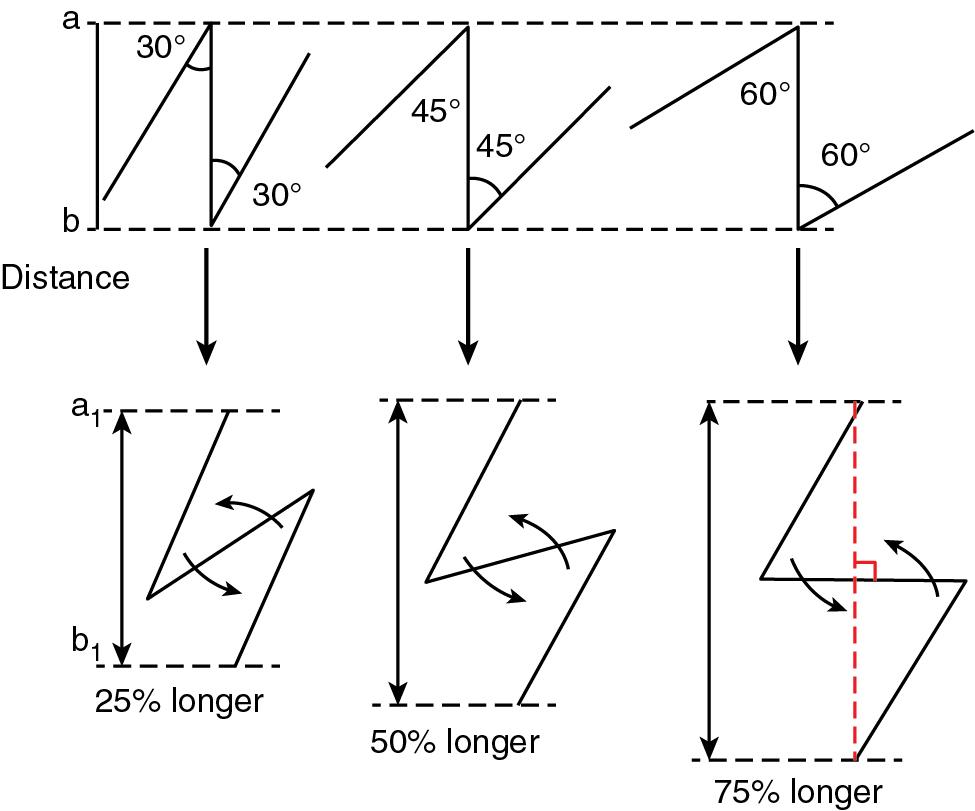
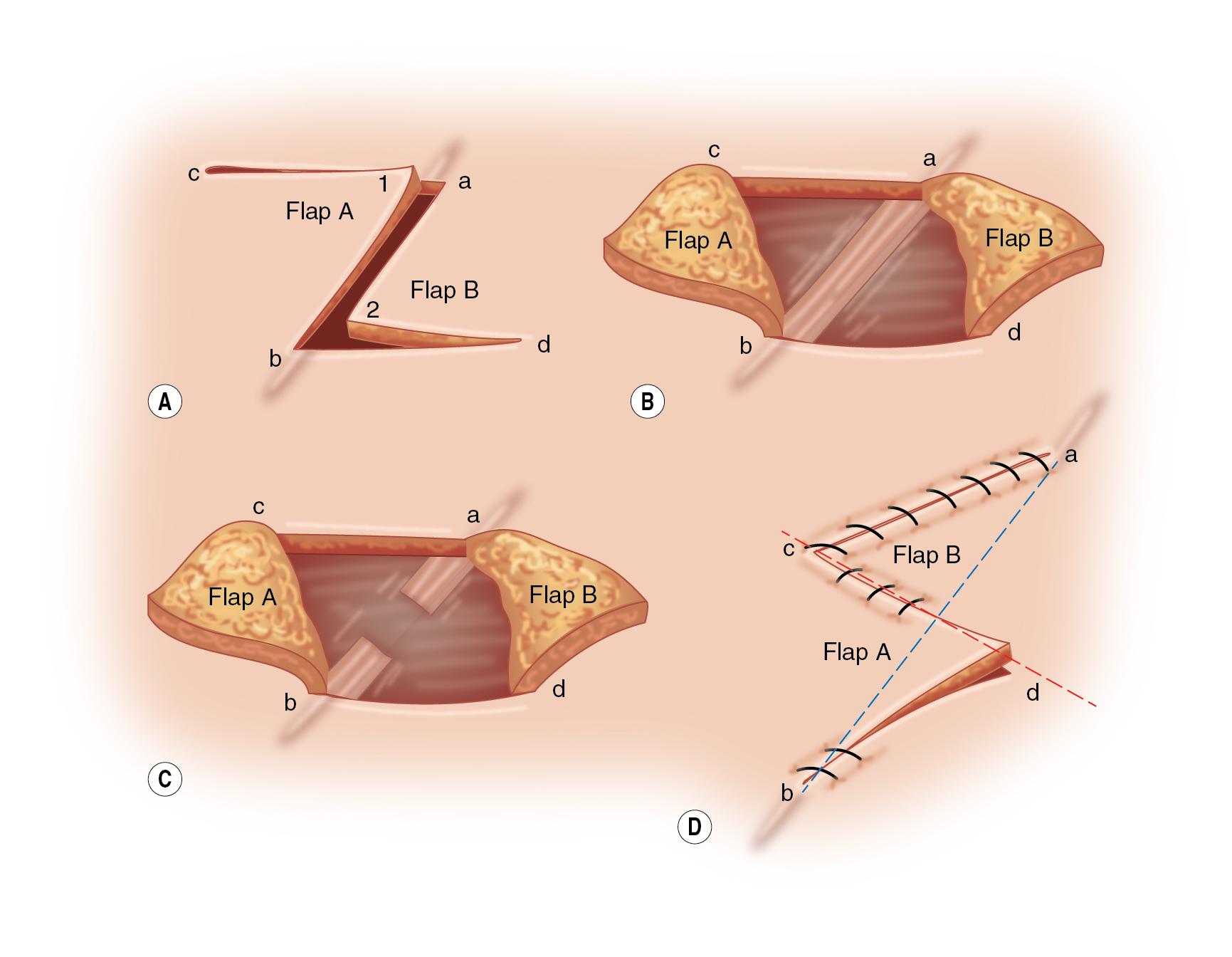
Z-plasties with 60-degree angles are most commonly used because they enable sufficient scar lengthening and are usually easier to transfer. Although flaps with greater angles can elongate the scar even further, they are more difficult to close without undue tension.
The minimum angle of the flap should be 30 degrees to avoid necrosis of the flap tip.
Multiple Z-plasties with shorter limbs are used to treat longer scar contractures when there is insufficient normal skin to perform one large Z-plasty ( Fig. 86.6 ).
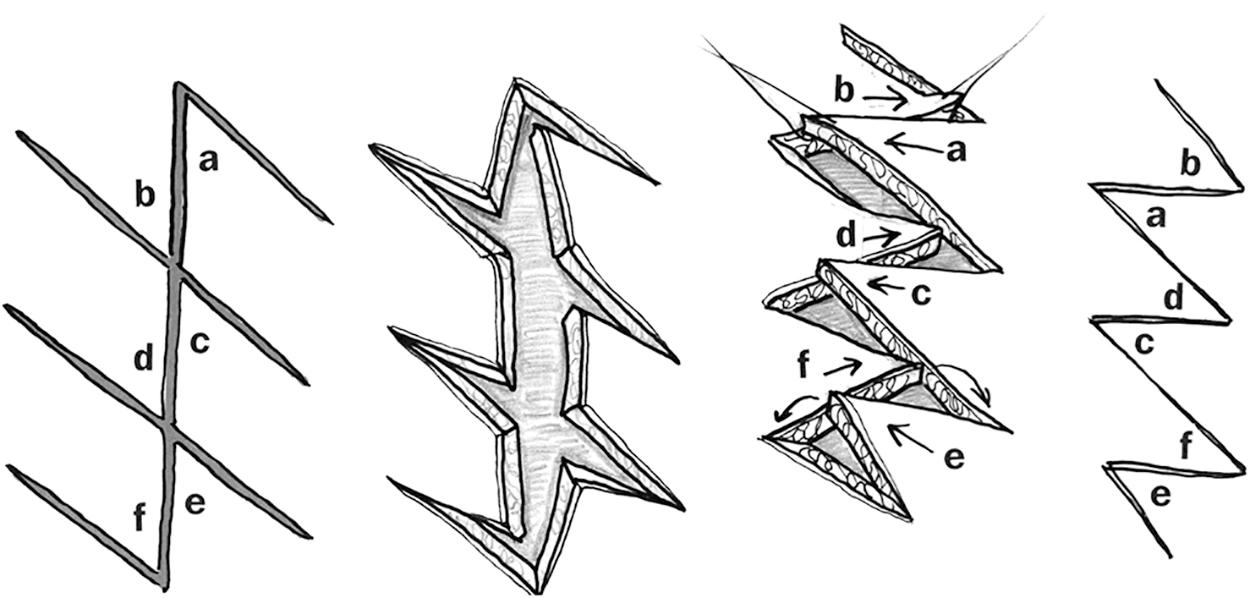
The use of multiple Z-plasties requires the design of smaller triangular flaps along the contracture line. This distributes the release more evenly than a single Z-plasty.
Five-flap Z-plasty, also known as the jumping-man flap , contains two opposing Z-plasties and one Y-V advancement flap in the middle ( Fig. 86.7 ). It is often used to treat webbed scars, especially in the first webspace.
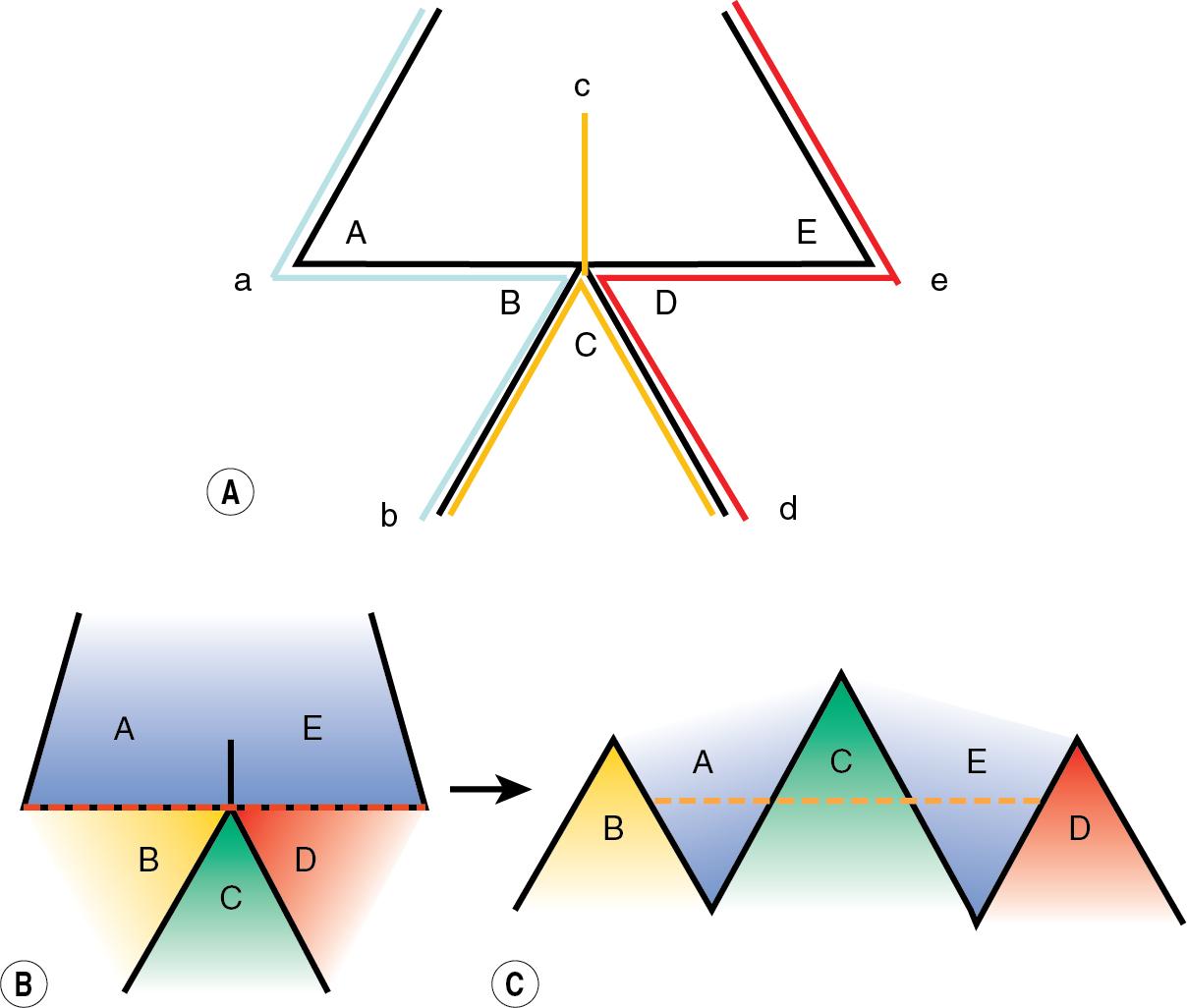
Visually, there are two flaps above the scar line (flaps A and E) and three flaps below the scar line (flaps B, C, and D). The webbed scar is lengthened and deepened through transposition of the upper and lower flaps.
In general, design large flaps, rather than multiple small flaps, to yield even longer lengthening.
Become a Clinical Tree membership for Full access and enjoy Unlimited articles
If you are a member. Log in here